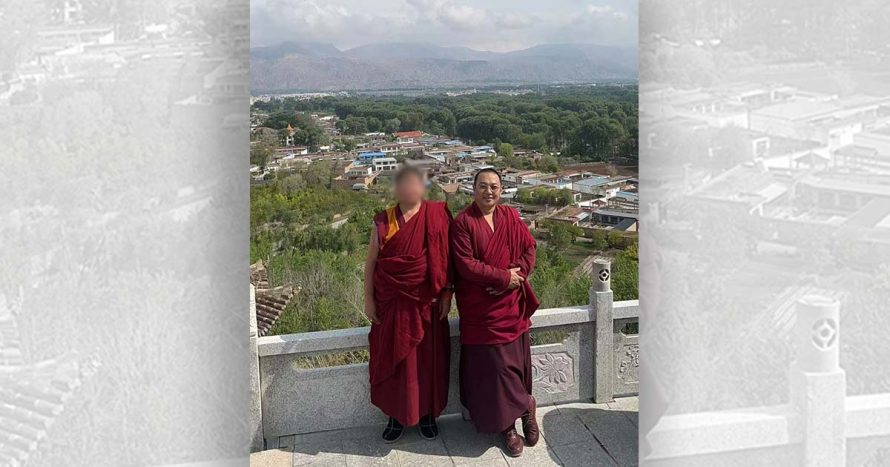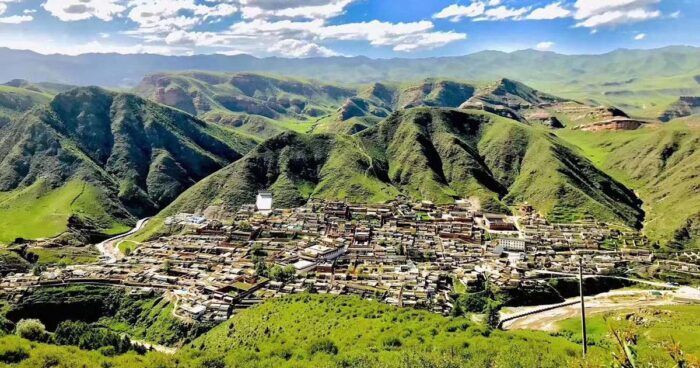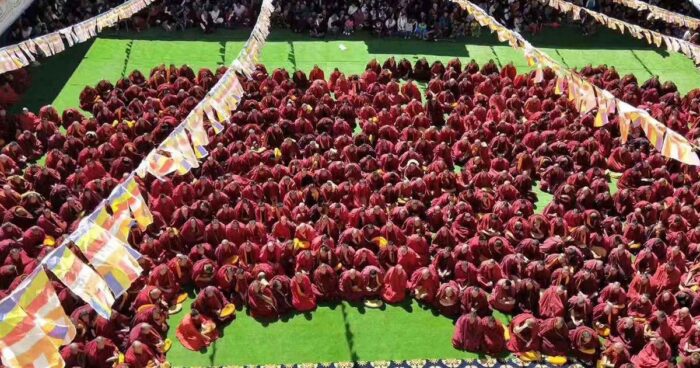On 18 August 2025, Shersang Gyatso, a 52-year-old senior leader at Tsang Monastery, took his own life after facing Chinese authorities’ intense scrutiny, intimidation, and repressive intrusions into his monastic community. His death followed heightened state surveillance around the Dalai Lama’s 90th birthday on 6 July, mandatory ideological indoctrination, interference with traditional religious practices, and the forced expulsion of young monks from Tsang Monastery. Shersang’s death underscores the current climate of severe and escalating restrictions on religious freedom in Tibet and Beijing’s ongoing efforts to suppress Tibetan devotion to the Dalai Lama. Additionally, ICT is concerned that Shersang’s death may reflect numerous unreported incidents tied to Chinese authorities’ crackdown during the Dalai Lama’s birthday.

Last month, the International Campaign for Tibet (ICT) reported that Chinese authorities imposed stringent security measures across Tibetan monasteries during the Dalai Lama’s birthday, which aligns with ICT’s prior reporting on Tibetans persecuted for celebrating the Dalai Lama’s birthday in the past. Despite an atmosphere of intimidation, Tibetans discreetly and bravely commemorated the occasion through symbolic social media posts, prayers, and songs, reflecting their enduring reverence for the Dalai Lama.

File picture of Tsang Monastery during the summer.
Located in Majang (Héběi) Yultso, Ba (Tongde) County, Tsolho (Hainan) Prefecture, Qinghai, Tsang Monastery houses monks from three prefectures; Malho (Huangnan), Tsolho and Golog (Guoluo) Prefectures.
Around 1 July, Chinese authorities intensified security measures at the monastery in anticipation of the Dalai Lama’s birthday on 6 July. Monks who were away from the monastery for family visits, community prayer services, or health care were summoned to return. Zega Gyatso, a monk who was in Xining City for medical treatment, was arrested on 2 July for allegedly remitting money to India, according to the Tibet Times, a media outlet based in India.
Authorities searched the monks’ dormitories and found photographs of the Dalai Lama. From 1 July to around 20 July, local authorities forced the monks to attend daily political and ideological meetings , according to ICT sources with contacts in Tibet. After that, the monks were allowed to leave the monastery. When the monks returned on 9 August to observe the summer retreat (Yarney), which typically lasts one and a half months, those under 18 were not allowed to reenter the monastery, according to ICT sources.
Sources report that these circumstances put Gyatso under considerable stress and pressure, and they view his suicide as a protest of the repressive measures against the monastery and its monks.
Shersang, from Arik Village in Malho Sogrik Autonomous County (Hénán Měnggǔzú Zìzhìxiàn), Malho (Huangnan) Prefecture, Qinghai, belonged to the Gyudpa college, one of the monastery’s five colleges.
Chinese authorities have systematically expelled young monks from Tibetan monasteries, invoking violations of China’s regulations on religion and education policy. Multiple reported cases reveal a pattern of systematic expulsion. For instance, 500 young monks were expelled from Taktsang Lhamo Kirti Monastery in Dzoge County in July 2024; 80 young monks were forced to leave from Jakyung and Ditsa Monasteries in Bayan County, in October 2021; 200 young monks were forced to leave from Dza Sershul Monastery in Dzachuka, in July 2018; 300 young monks were expelled from local monasteries in Shiqu County in March 2015; 140 young monks were forced out of Muge Monastery school into state controlled boarding schools in Muge, Ngaba, in June 2024.

File photo of a religious ceremony with Tsang Monastery monks gathered before the local Tibetan community, leading prayers.